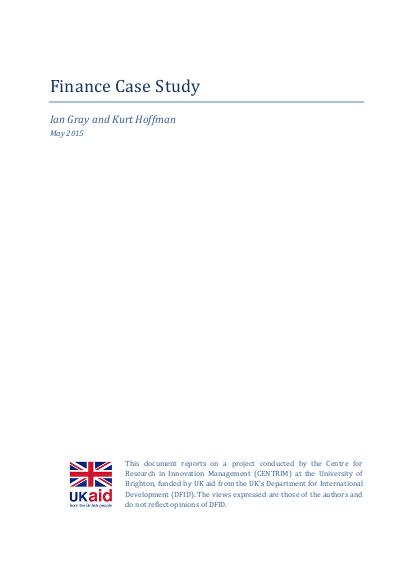
Humanitarian needs have increased over the past few decades and are projected to increase dramatically in the coming years. The world that is emerging is urban, increasingly buffeted by the effects of climate change. The old paradigm of state vs. state conflict no longer covers the rise in non-state actors bringing instability and conflict to every continent. Generations are growing up and having their own children in the same refugee and IDP (Internally Displaced People) camps they were born in.
Funding for humanitarian response is lagging behind the rising needs. The current ways of working are becoming outmoded in many ways, adding further strain to the system. This report seeks to understand how products, processes, services and organisations that are seeking to make positive changes are being funded and supported.
This Finance for Humanitarian Innovation report is one of five topic-specific studies conducted as part of the Humanitarian Innovation Ecosystem Mapping Project being carried out by CENTRIM of the University of Brighton on behalf of DFID. The overarching goal of the project is to map and assess the drivers, elements and process of innovation within the humanitarian sector, using an ecosystem framework and analytical approach derived from the field of innovation management.